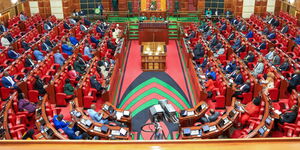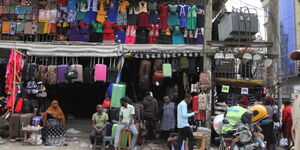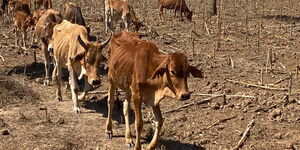Several months after President William Ruto promised to acquire a machine capable of producing one million chapatis per day, Nairobi Governor Johnson Sakaja announced that the county government had purchased one.
On Wednesday October 8, Sakaja revealed that the much smaller machine acquired by the county could only produce 6,000–8,000 chapatis per hour.
The governor mentioned that the machine would be used in Nairobi’s Dishi na County program, aimed at feeding school learners across the county.
If used for five hours a day, say from 6am to 11am, it would produce approximately 30,000 to 40,000 chapatis, falling short of the one-million target.
Sakaja also maintained that Ruto would soon fulfil his commitment and help the county acquire a much bigger machine.
“President William Ruto’s chapati-making machine is still coming, but we acquired one that can produce 6,000 to 8,000 chapatis per hour,” Sakaja stated.
Ruto's Chapati Making Machine
In March, Ruto made headlines after pledging to donate funds to purchase a machine that could produce one million chapatis daily for schoolchildren in Nairobi.
This followed a request from Nairobi Governor Johnson Sakaja for Ruto to provide the machine in support of his 'Dishi na County' school feeding programme.
However, critics viewed the move as unusual for a high-ranking official such as the President, stating that it would not lead to significant development or economic growth.
Fellow Kenyans compared the initiative to projects in countries like Japan and China, which have brought substantial development to their people, contrasting with Kenya’s focus on less impactful projects.
This led to Ruto being nicknamed “El Chapo,” with Kenyans creating memes and AI-generated images of millions of chapatis in a factory.
The nickname, seemingly intended to mock the President, was a humorous way for Kenyans to respond to Ruto’s pledge amidst economic hardships and developmental challenges.
Sakaja also faced criticism, with Saboti Member of Parliament Caleb Amisi urging him to prioritize better requests to the Head of State.
Amisi argued that the governor should advocate for major infrastructural projects, such as underground speed trains, overpass roads, and widespread water points.
“A governor of the biggest regional capital city, whose GDP is more or equal to about 15 African countries, boasts of chapatis as his main economic activity and legacy project," he said.
Sakaja's Dishi na County School-Feeding Programme
Launched on June 19, 2023, Dishi na County is a school feeding initiative designed to address food shortages in schools, improve student health, and enhance academic performance.
The program focuses on building centralized kitchens in each of Nairobi's 17 sub-counties where meals are prepared and distributed to schools, ensuring students receive balanced diets daily.
To date, over 316,000 learners from more than 230 schools across all sub-counties benefit from the program, which has already served its 30,000,000th meal.












